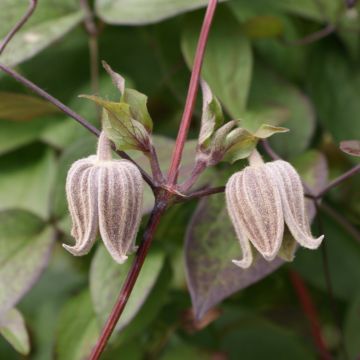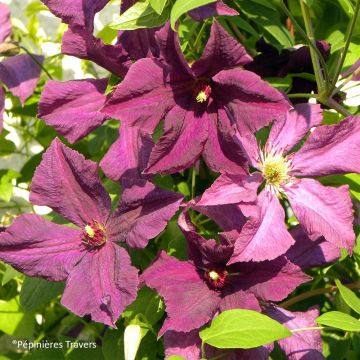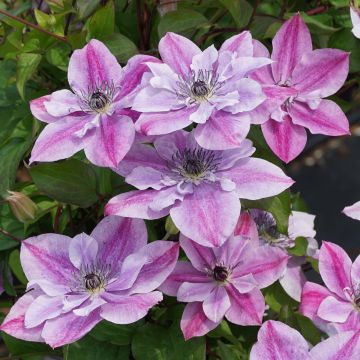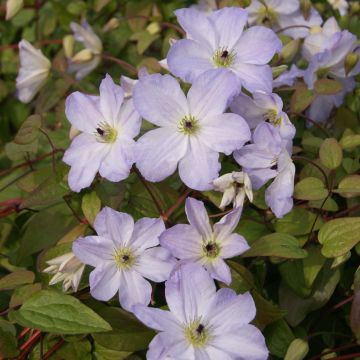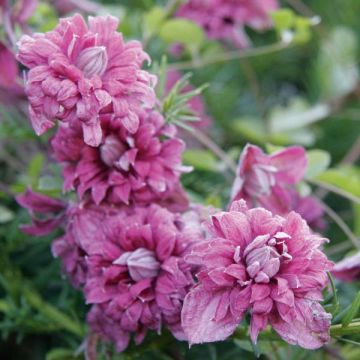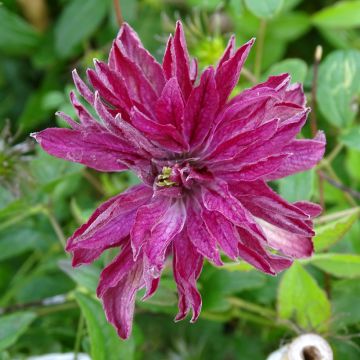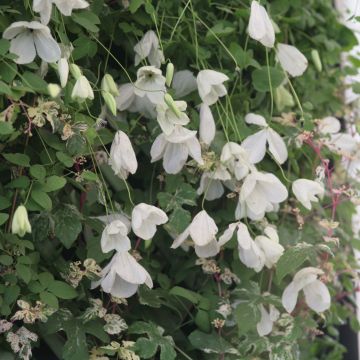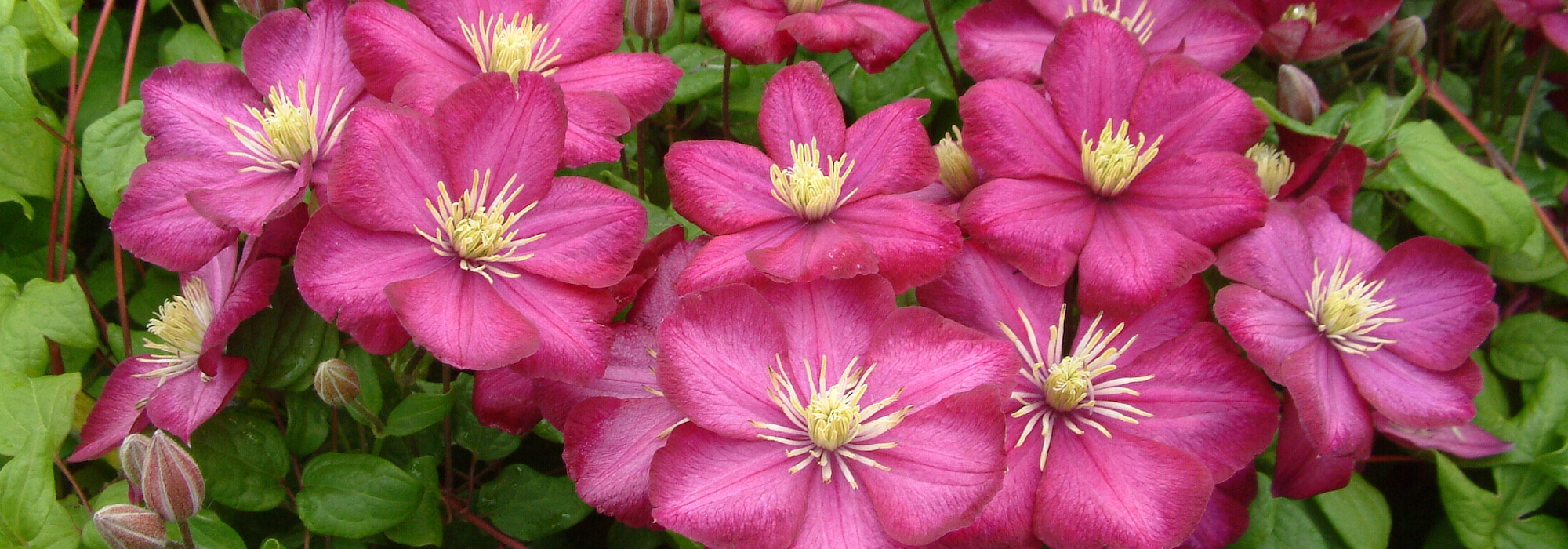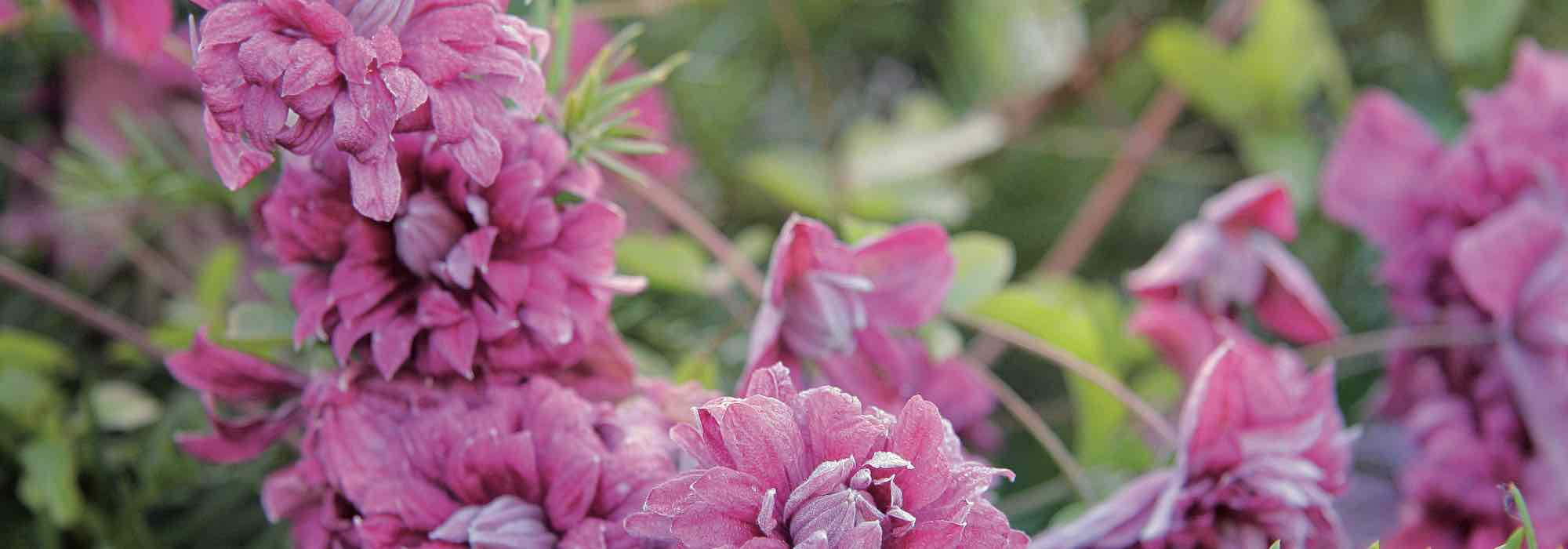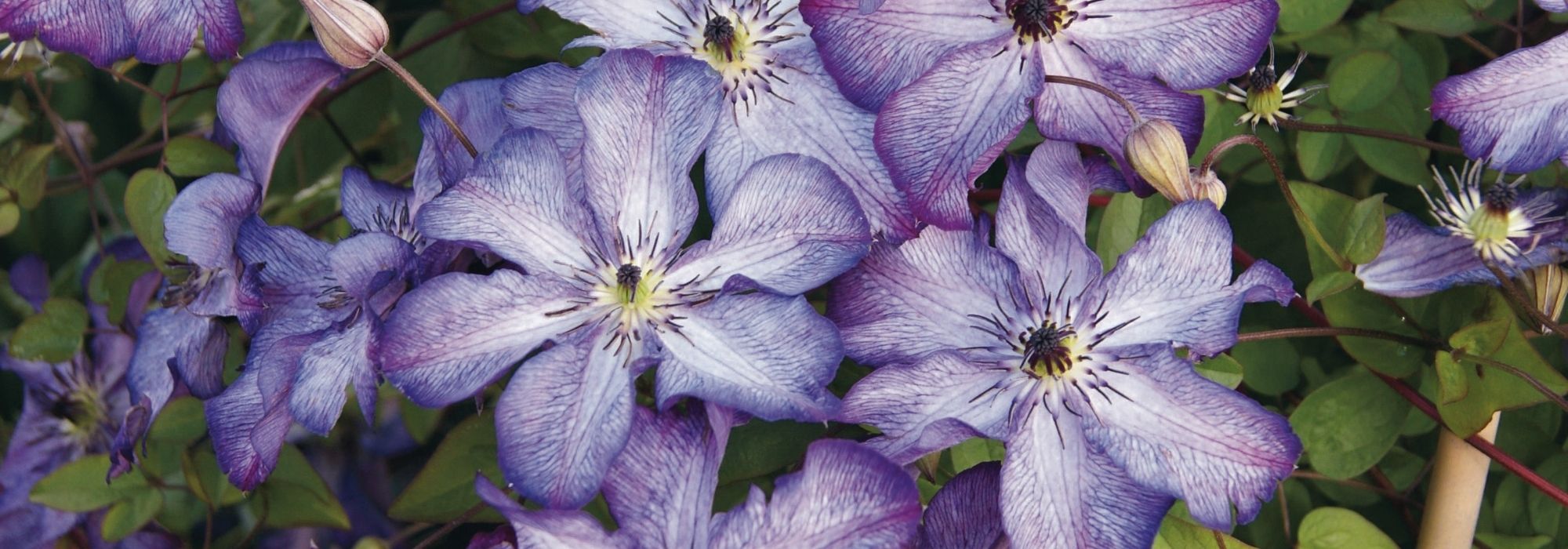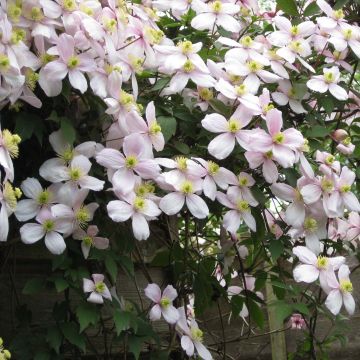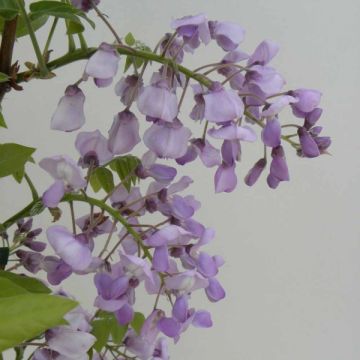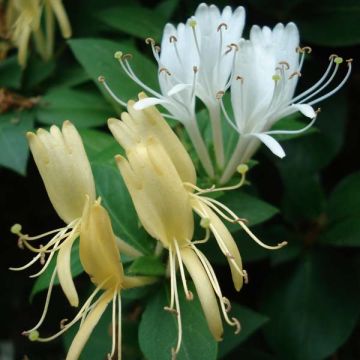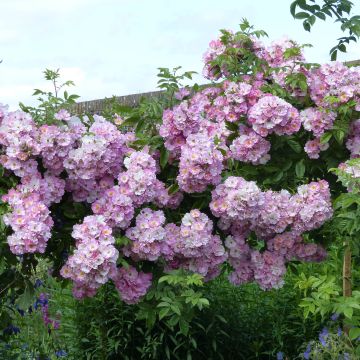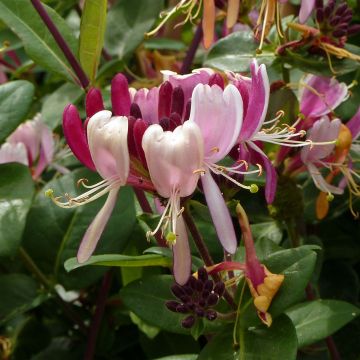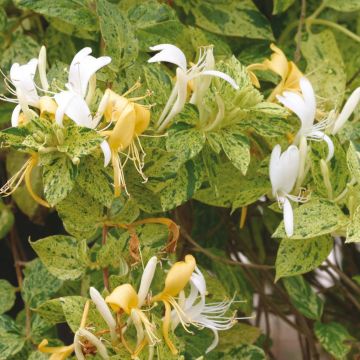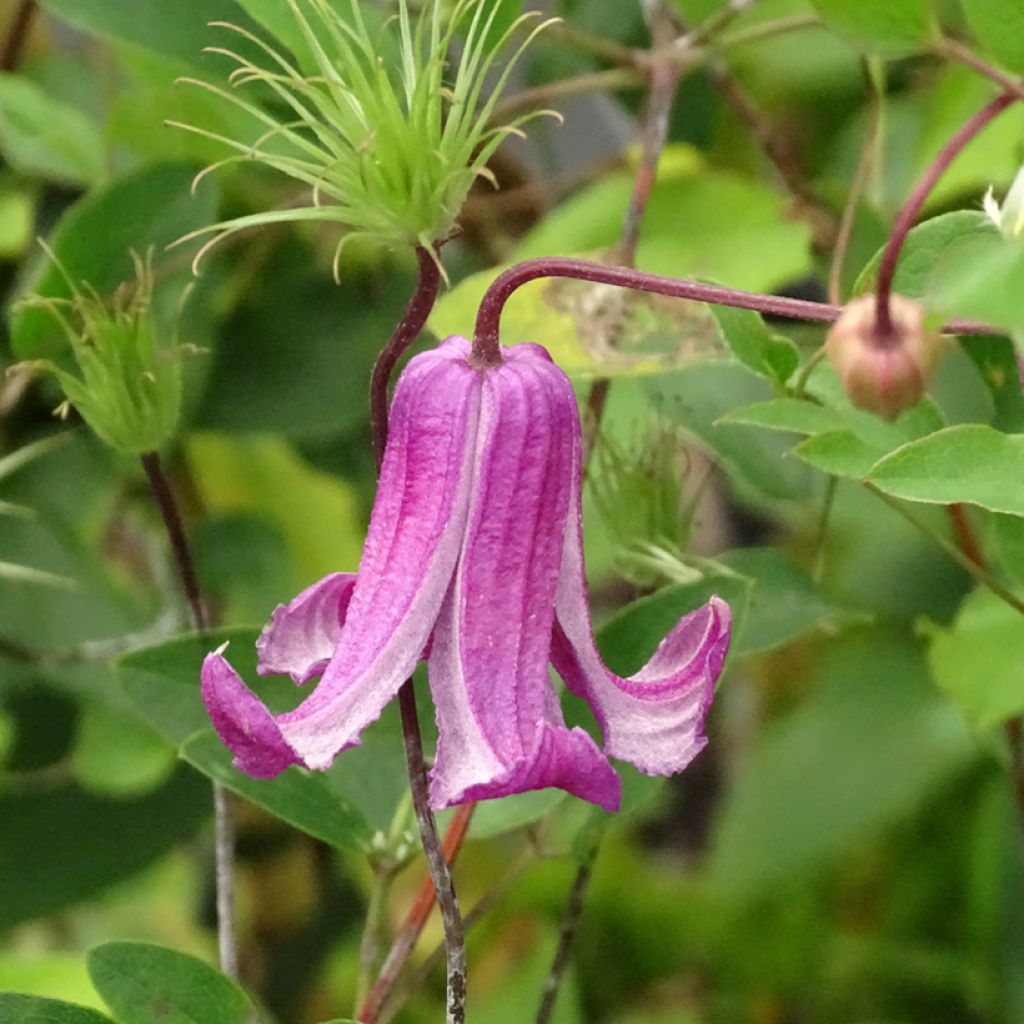

Clematis viticella Queen Mother
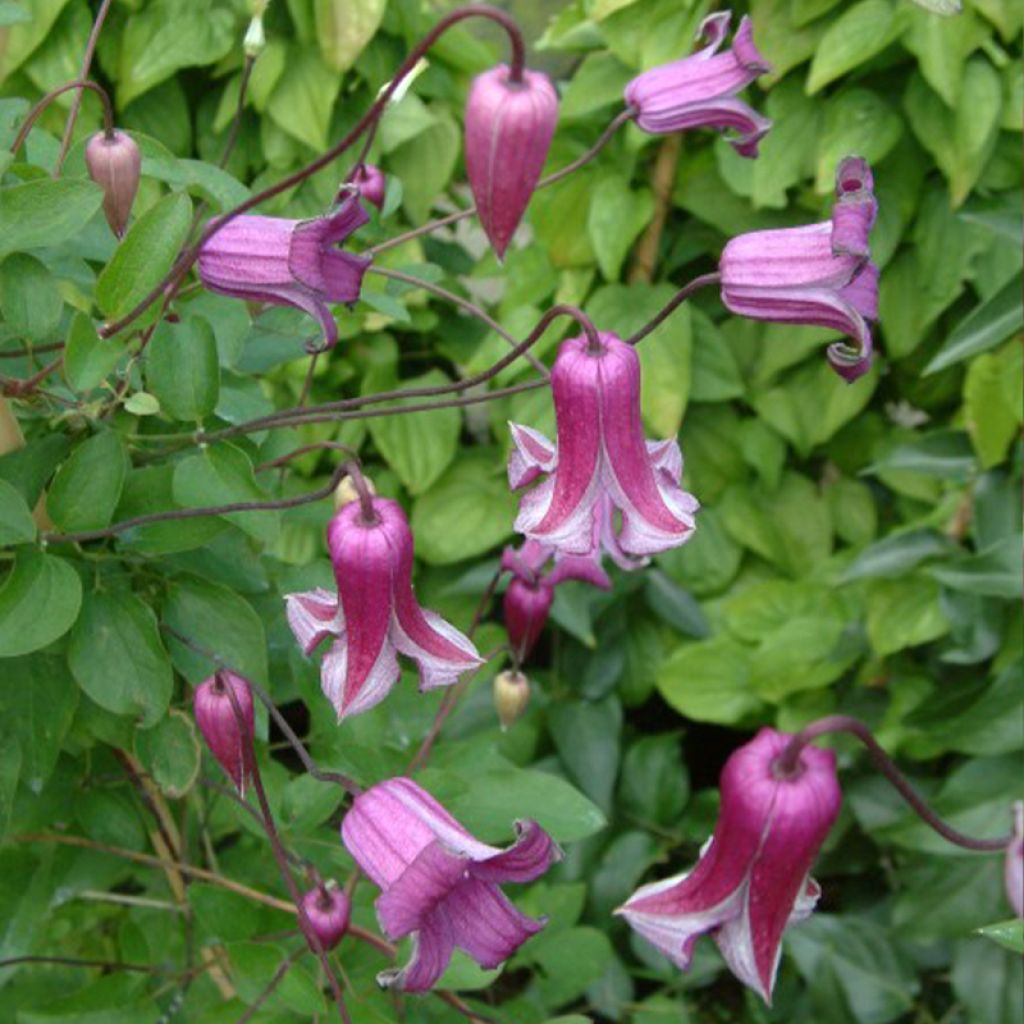

Clematis viticella Queen Mother
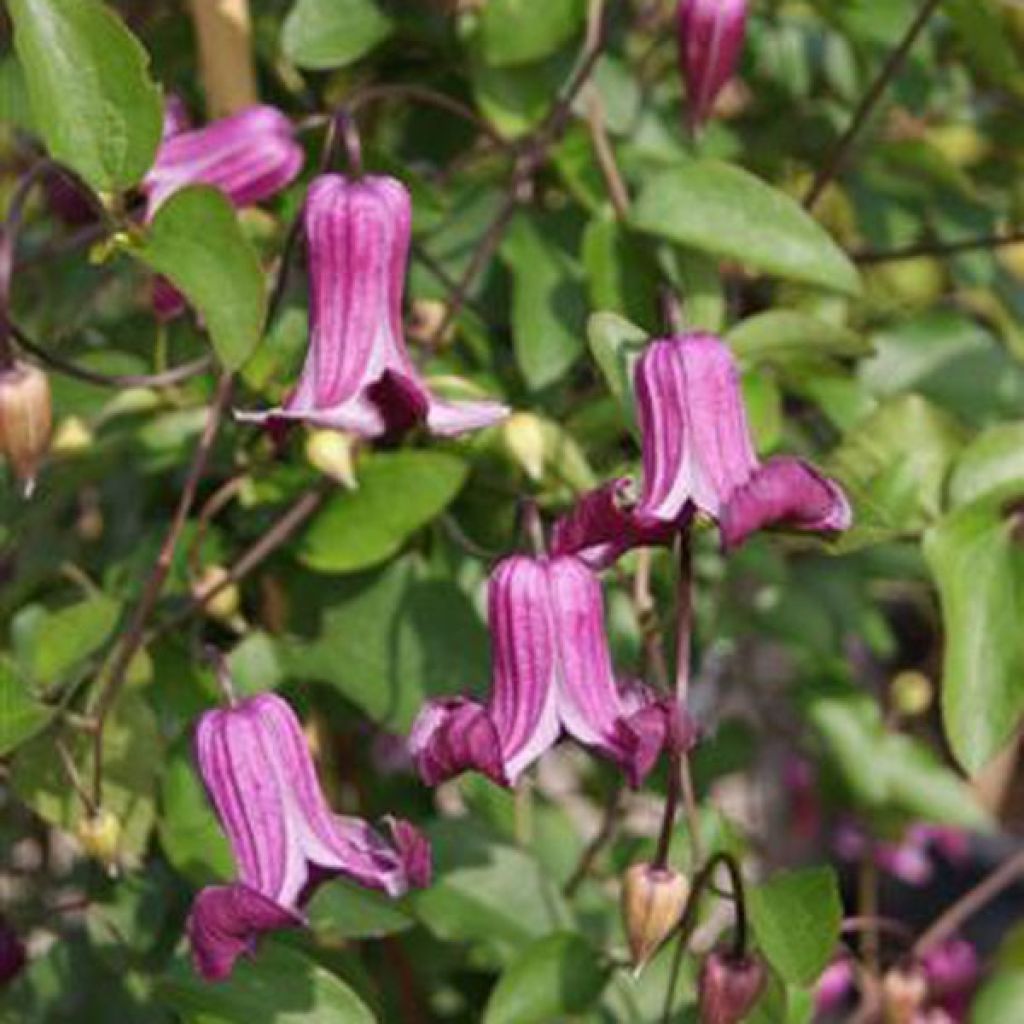

Clematis viticella Queen Mother
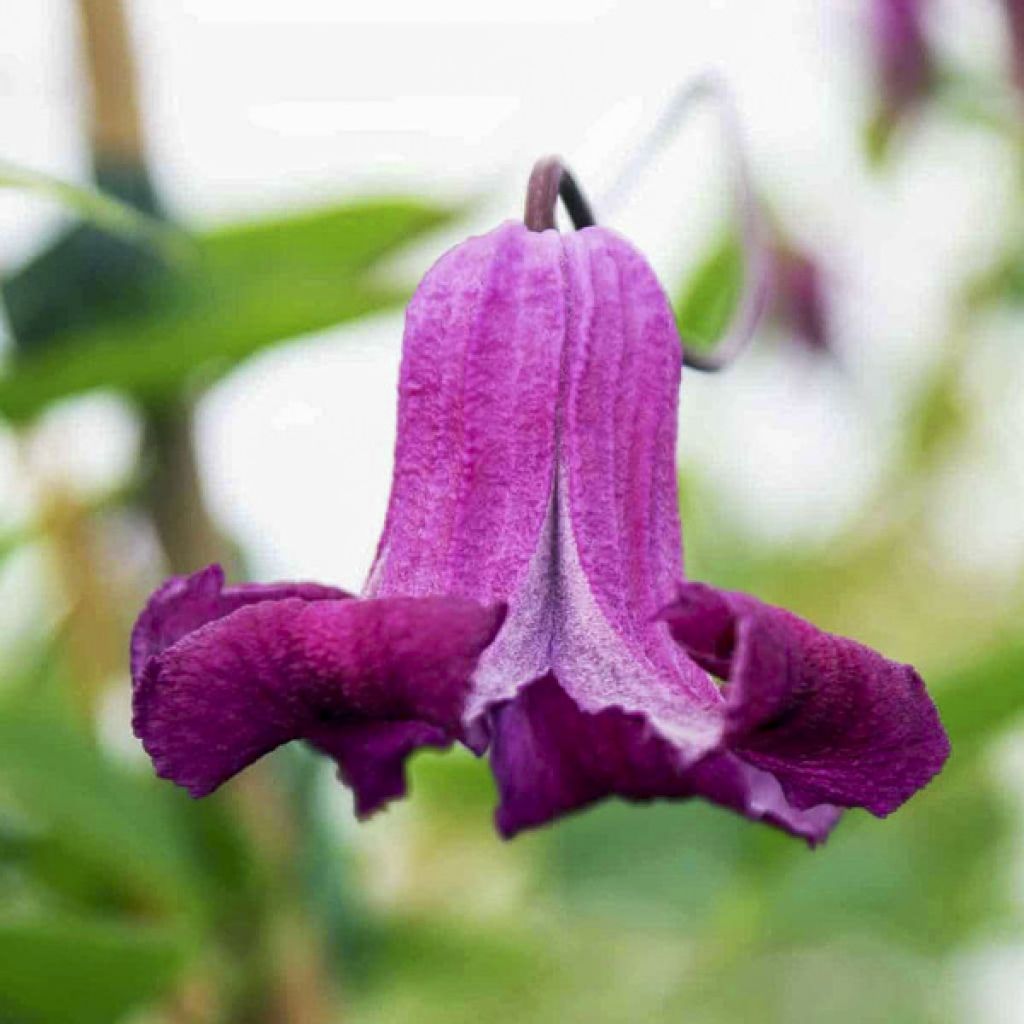

Clematis viticella Queen Mother


Clematis viticella Queen Mother
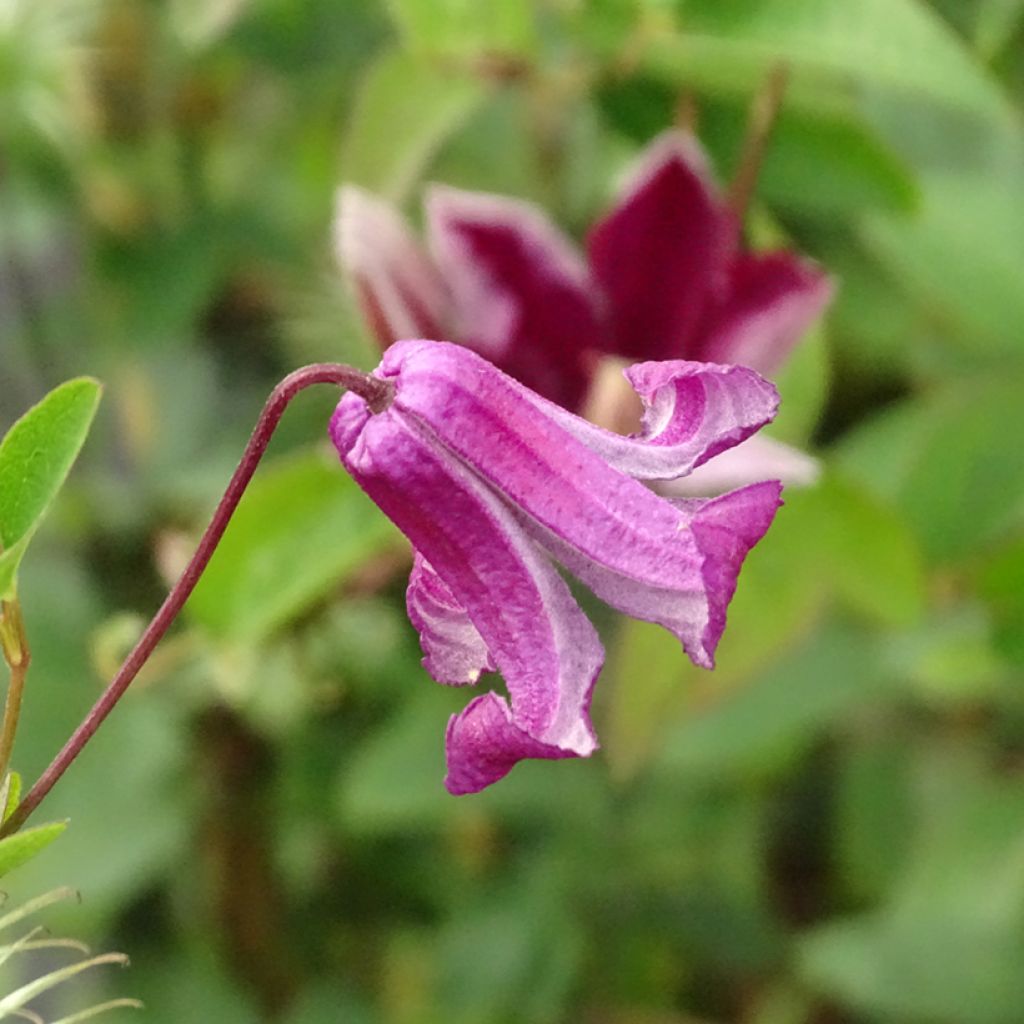

Clematis viticella Queen Mother
Clematis viticella Queen Mother
Clematis viticella Queen Mother
Lovely little two-year-old clematis. I've paired it with ornamental shrubs... still waiting for full growth... the bell-shaped flowers are superb.
Pascale, 10/11/2024
Special offer!
Receive a €20 voucher for any order over €90 (excluding delivery costs, credit notes, and plastic-free options)!
1- Add your favorite plants to your cart.
2- Once you have reached €90, confirm your order (you can even choose the delivery date!).
3- As soon as your order is shipped, you will receive an email containing your voucher code, valid for 3 months (90 days).
Your voucher is unique and can only be used once, for any order with a minimum value of €20, excluding delivery costs.
Can be combined with other current offers, non-divisible and non-refundable.
Home or relay delivery (depending on size and destination)
Schedule delivery date,
and select date in basket
This plant carries a 6 months recovery warranty
More information
We guarantee the quality of our plants for a full growing cycle, and will replace at our expense any plant that fails to recover under normal climatic and planting conditions.

Would this plant suit my garden?
Set up your Plantfit profile →
Description
Clematis Queen Mother is an adorable Italian clematis that boasts an abundance of purple-crimson bell-shaped flowers edged with pink. They bloom from summer to October. Its modest growth and light vegetation are two additional assets for ornamenting patios and small spaces. Its ease of cultivation, in a wide range of soils and climates, will delight all gardeners.
Clematis belong to the Ranunculaceae family. They can be found in Europe, the Himalayas, China, Australia, and North and Central America. The variety Queen Mother ('Zoqum') was obtained in 2011 in Germany by William Straver. It is probably descended from Clematis viticella, native to southern Europe and known for its natural resistance to clematis wilt. Some specialists see in the shape of its flowers and its fairly late flowering characteristics that link it to the group of Texensis clematis. It is a perfectly perennial, semi-woody and climbing herbaceous plant that will reach a height of about 2m (7ft), with a minimum spread of 1m (3ft). This clematis bears pendulous flowers, which can reach 4cm (in) in length. From July to early autumn, they appear in successive waves on the current year's shoots. The flowers are borne on long purplish peduncles. They have 4 petals fused at the base, with a recurved margin. Their colour is intermediate between purple and violet, with a broad border of lighter pink. The glabrous leaves are divided into 3 small elliptical to lanceolate leaflets, of an olive-green colour. The foliage dries up in winter. This clematis clings to support or host plants through petioles transformed into tendrils.
Plant your clematis alongside climbing roses or climbers ('New Dawn', 'Pomponella', 'Bouquet Parfait'), to extend the flowering period of walls and pergolas until the end of summer. It is a diverse genus, with clematis of all colours, shapes, and sizes. Take advantage of their ease of cultivation to give your garden a romantic and bohemian touch. Queen Mother will pair well with the pink flowers of C. 'Patricia Ann Fretwell' or C. 'Little Mermaid', for example, which are small climbers with the same stature. They will look wonderful climbing a fence or covering a wall exposed to morning sun. Let it climb a bush with purple foliage (Black Lace Elder, Midnight Ninebark): the colour combination is magnificent!
Tips: Avoid excessive use of fertilisers that stimulate foliage growth at the expense of flowers. Do not mulch in order to avoid excessive moisture.
Clematis viticella Queen Mother in pictures


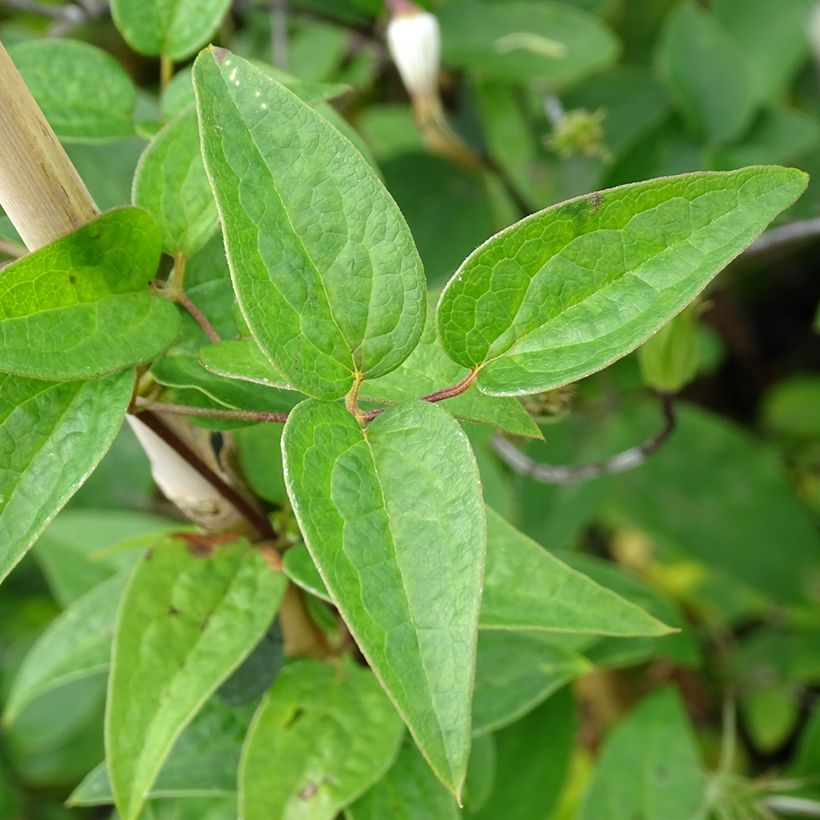

Plant habit
Flowering
Foliage
Botanical data
Clematis
viticella
Queen Mother
Ranunculaceae
Cultivar or hybrid
Other Clematis Viticella
View all →Planting and care
Clematis viticella 'Queen Mother' should be planted in spring or autumn at a depth of 8cm (3in), with the root ball laid flat on the ground rather than vertically as usual. The head should be in the sun and the base in the shade. Cover the base with a small mound of soil to encourage new shoots. After planting, prune the stems to 30cm (12in) from the base, above a pair of buds.
Train them loosely to help the plant cling on its own.
In March, cut back all the stems from the previous year to 20cm (8in) from the ground. Prune above a pair of buds.
This variety is not susceptible to wilting and adapts well to any well-prepared, well-drained garden soil, even if it is slightly chalky and fairly dry in summer.
Planting period
Intended location
Care
Planting & care advice
-
, onOrder confirmed
Reply from on Promesse de fleurs
Similar products
Haven't found what you were looking for?
Hardiness is the lowest winter temperature a plant can endure without suffering serious damage or even dying. However, hardiness is affected by location (a sheltered area, such as a patio), protection (winter cover) and soil type (hardiness is improved by well-drained soil).

Photo Sharing Terms & Conditions
In order to encourage gardeners to interact and share their experiences, Promesse de fleurs offers various media enabling content to be uploaded onto its Site - in particular via the ‘Photo sharing’ module.
The User agrees to refrain from:
- Posting any content that is illegal, prejudicial, insulting, racist, inciteful to hatred, revisionist, contrary to public decency, that infringes on privacy or on the privacy rights of third parties, in particular the publicity rights of persons and goods, intellectual property rights, or the right to privacy.
- Submitting content on behalf of a third party;
- Impersonate the identity of a third party and/or publish any personal information about a third party;
In general, the User undertakes to refrain from any unethical behaviour.
All Content (in particular text, comments, files, images, photos, videos, creative works, etc.), which may be subject to property or intellectual property rights, image or other private rights, shall remain the property of the User, subject to the limited rights granted by the terms of the licence granted by Promesse de fleurs as stated below. Users are at liberty to publish or not to publish such Content on the Site, notably via the ‘Photo Sharing’ facility, and accept that this Content shall be made public and freely accessible, notably on the Internet.
Users further acknowledge, undertake to have ,and guarantee that they hold all necessary rights and permissions to publish such material on the Site, in particular with regard to the legislation in force pertaining to any privacy, property, intellectual property, image, or contractual rights, or rights of any other nature. By publishing such Content on the Site, Users acknowledge accepting full liability as publishers of the Content within the meaning of the law, and grant Promesse de fleurs, free of charge, an inclusive, worldwide licence for the said Content for the entire duration of its publication, including all reproduction, representation, up/downloading, displaying, performing, transmission, and storage rights.
Users also grant permission for their name to be linked to the Content and accept that this link may not always be made available.
By engaging in posting material, Users consent to their Content becoming automatically accessible on the Internet, in particular on other sites and/or blogs and/or web pages of the Promesse de fleurs site, including in particular social pages and the Promesse de fleurs catalogue.
Users may secure the removal of entrusted content free of charge by issuing a simple request via our contact form.
The flowering period indicated on our website applies to countries and regions located in USDA zone 8 (France, the United Kingdom, Ireland, the Netherlands, etc.)
It will vary according to where you live:
- In zones 9 to 10 (Italy, Spain, Greece, etc.), flowering will occur about 2 to 4 weeks earlier.
- In zones 6 to 7 (Germany, Poland, Slovenia, and lower mountainous regions), flowering will be delayed by 2 to 3 weeks.
- In zone 5 (Central Europe, Scandinavia), blooming will be delayed by 3 to 5 weeks.
In temperate climates, pruning of spring-flowering shrubs (forsythia, spireas, etc.) should be done just after flowering.
Pruning of summer-flowering shrubs (Indian Lilac, Perovskia, etc.) can be done in winter or spring.
In cold regions as well as with frost-sensitive plants, avoid pruning too early when severe frosts may still occur.
The planting period indicated on our website applies to countries and regions located in USDA zone 8 (France, United Kingdom, Ireland, Netherlands).
It will vary according to where you live:
- In Mediterranean zones (Marseille, Madrid, Milan, etc.), autumn and winter are the best planting periods.
- In continental zones (Strasbourg, Munich, Vienna, etc.), delay planting by 2 to 3 weeks in spring and bring it forward by 2 to 4 weeks in autumn.
- In mountainous regions (the Alps, Pyrenees, Carpathians, etc.), it is best to plant in late spring (May-June) or late summer (August-September).
The harvesting period indicated on our website applies to countries and regions in USDA zone 8 (France, England, Ireland, the Netherlands).
In colder areas (Scandinavia, Poland, Austria...) fruit and vegetable harvests are likely to be delayed by 3-4 weeks.
In warmer areas (Italy, Spain, Greece, etc.), harvesting will probably take place earlier, depending on weather conditions.
The sowing periods indicated on our website apply to countries and regions within USDA Zone 8 (France, UK, Ireland, Netherlands).
In colder areas (Scandinavia, Poland, Austria...), delay any outdoor sowing by 3-4 weeks, or sow under glass.
In warmer climes (Italy, Spain, Greece, etc.), bring outdoor sowing forward by a few weeks.































